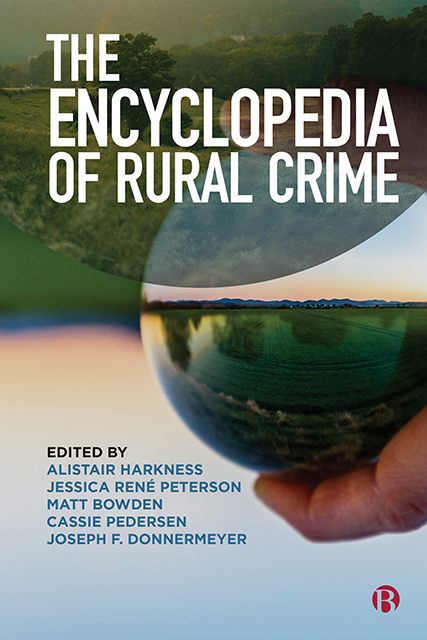Book contents
57 - Jails and Prisons
Published online by Cambridge University Press: 20 June 2023
Summary
Although there is some variation throughout the world, the operation of jails and prisons in the countryside has been the norm for centuries (see Dikötter et al, 2007). There are several key differences between jails and prisons in a North American context, and those distinctions are important. Jails are typically intended for the short-term detention of individuals awaiting a court appearance or trial, or persons sentenced to relatively short sentences. Prisons, by contrast, house individuals convicted of committing serious offences and are serving lengthy sentences. In some nations, however, a single type of facility holds both detained and long-term sentenced inmates.
Although jails are found in both urban and rural areas, most prisons are in the countryside. Placing correctional facilities in rural areas creates challenges for jail and prison personnel, the people living in these facilities and their families. Moreover, the impact of placing these facilities in rural areas on the people living in those communities is often overlooked.
Jails
There are two types of jail operations. The first is the stand-alone jail, which is typically operated and funded by a local government. Whilst some urban jails hold thousands of inmates, there are about 1,500 facilities with fewer than 100 beds in the United States and these small stand-alone facilities – that are not part of a larger network – are found throughout the world. Many of these small facilities are underfunded as they are located in economically depressed locations that draw from impoverished tax bases. This underfunding inhibits the ability of their personnel to deliver safe and humane care.
The second model of jail operations are facilities operated by departments of corrections or similar bodies and are funded by regional, state, provincial or federal governments. These jails often hold hundreds of residents, and they are generally able to provide better care than their smaller counterparts. Moreover, they are often part of a network of similar facilities that allows them to share expertize and resources; enabling them to deliver more professional services.
- Type
- Chapter
- Information
- The Encyclopedia of Rural Crime , pp. 228 - 230Publisher: Bristol University PressPrint publication year: 2022



